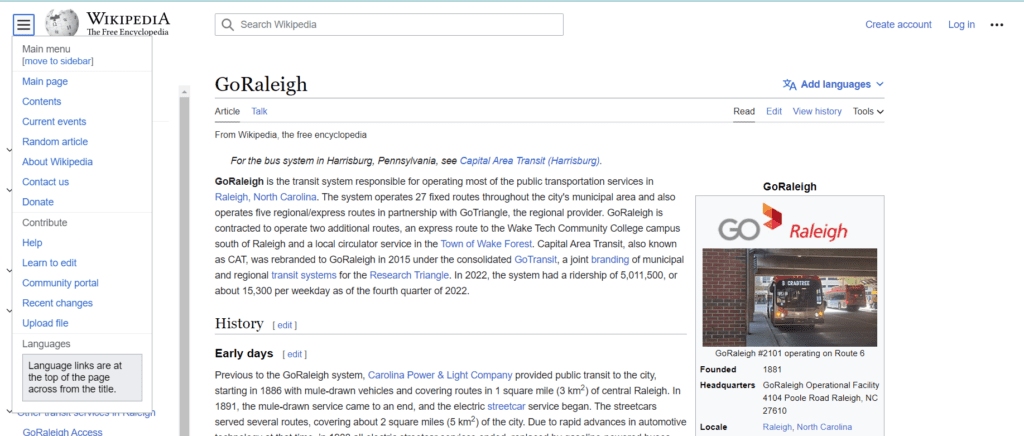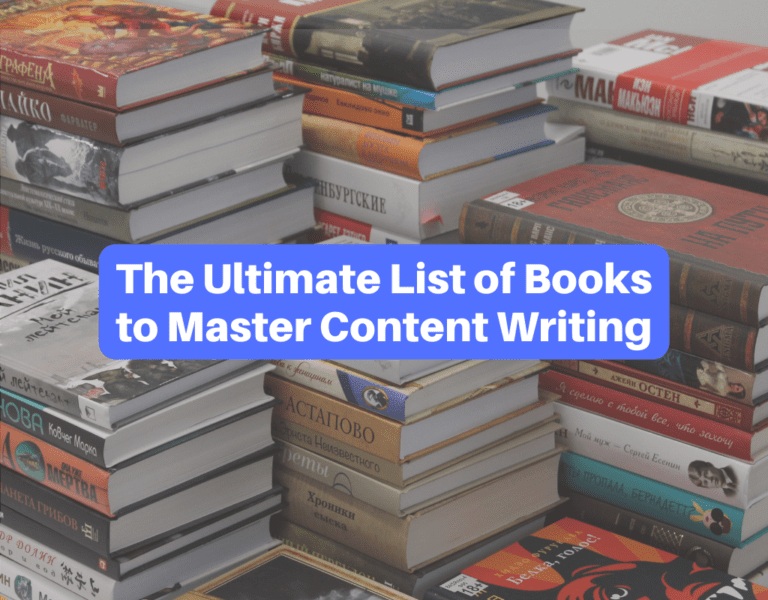Are you a content writer looking to improve your writing skills and take your craft to the next level? Writing exercises are a great way to hone your skills, get your creative juices flowing, and improve your writing overall.
In this blog post, we’ll discuss some of the best writing exercises and writing prompts that can help you become a better content writer.
Writing exercises to boost your writing skills
Let’s list out the 19 writing exercises you should follow to help improve your writing skills and to generate new ideas.
- Writing exercises to boost your writing skills
- 1. Brainstorming exercises
- 2. Creative Writing Exercises
- 3. Writing prompts
- 4. Alphabet Writing Exercise
- 5. A Letter From Your Character To You
- 6. Write a Letter to Your Younger Self
- 7. Write with inspiring images
- 8. Write a Story You’ve Heard Before
- 9. Use a Wikipedia Random Article
- 10. Try the Ben Franklin Method
- 11. New Year’s resolutions for a fictional character
- 12. The Opening Sentence
- 13. The alphabet story – creating a story as a group
- 14. It’s the end of the world
- 15. Verb Noun Fiction Exercise (Inspired by Stephen King)
- 16. Creative writing prompts
- 17. Show Don’t Tell One
- 18. Alternative Christmas Story
- 19. Group writing exercise
- Taking Action: The Key to Improving Your Writing with Exercises”
1. Brainstorming exercises


Brainstorming is an essential part of content writing. This is where you come up with ideas and concepts for your text. Some effective brainstorming exercises include:
Free writing
Free writing is a technique used by writers to develop ideas and overcome writer’s block. It involves writing continuously for a set amount of time without thinking about grammar, spelling, or meaning. The goal is to let your thoughts flow freely without any inhibitions and to write down whatever comes to mind.
Mind Mapping
Mind mapping is a visual brainstorming technique that can be helpful for writers to organize and generate ideas. It involves creating a diagram or map that connects different ideas, concepts, and keywords in a way that reflects their relationships and associations.
Word Association Games
Word association games are a fun and creative way for writers to generate ideas and overcome writer’s block. These games involve starting with a single word and then brainstorming other words or ideas that are associated with it.
One popular word association game for writers is “word chain”. In this game, one person says a word first, and the next person must say a word associated with the previous word. For example, if the first word is “tree,” the second person might say “leaves,” the third person might say “autumn,” and so on.
These exercises can help you develop new ideas and see connections between them.
2. Creative Writing Exercises
Writing exercises are an essential tool for writers looking to develop their skills and expand their creativity. One of the most effective types of exercises is the creative writing exercise, which focuses on developing imaginative and expressive writing skills.
A creative writing exercise can take many forms, but it typically involves a prompt or set of prompts designed to inspire the writer to explore new ideas and techniques. Some exercises might involve writing a short story based on a particular theme or idea, while others might ask the writer to experiment with different writing styles or perspectives.
One popular creative writing exercise involves using random words or phrases to spark the imagination. For example, a writer might be given a list of five unrelated words, such as “butterfly,” “telephone,” “carnival,” “jungle,” and “fireplace,” and then asked to write a short story incorporating all of these elements in some way.
If you’re a writer looking to improve your craft, incorporating creative writing exercises and journaling into your routine can be an effective way to do so. Try setting aside a few minutes each day or week to work on a new exercise, and see how it affects your writing over time.
3. Writing prompts
Writing prompts are simply ideas or topics that are meant to inspire you to write. They can be a great way to jump-start your creativity and get you out of a writing slump.
For e.g., if you’re writing a blog, or post about travel, a writing prompt might be “Describe your dream vacation destination and why it’s your top pick.”
This prompt can help you develop your writing skills by encouraging you to focus on details and descriptions, and to think about why certain things appeal to you.
Here’s a list of sources that will help you unlock your writing skills and improve your creativity.
- 1,000 Creative Writing Prompts: This book by Bryan Cohen contains 1,000 writing prompts in various genres and styles.
- The Writing Deck: 52 Prompts for Putting Pen to Paper is a deck of cards created by authors by Emily Campbell and Harry Oulton. Each card in the deck features a unique writing prompt designed to inspire writers and help them to develop their craft.
- ChatGPT: ChatGPT is an AI tool that generates unique writing ideas and prompts. Just ask for a prompt, and it will help you start writing.
4. Alphabet Writing Exercise


Alphabet writing exercise is a writing exercise that involves writing a sentence or a paragraph using every letter of the alphabet. The goal is to use each letter of the alphabet at least once in the sentence or paragraph, in order from A to Z.
For example, a sentence using the alphabet writing exercise might look like this: “An avid birdwatcher caught dozens of eagles flying gracefully high in just known little meadows near old Parker’s quiet ranch.”
This exercise can help you improve your creativity, writing fluency, and vocabulary. It challenges you to think outside the box and find interesting and unique ways to use each letter of the alphabet in a sentence or paragraph. It’s a fun and engaging way to practice your writing skills and break out of writer’s block.
5. A Letter From Your Character To You
Sometimes characters that you create may seem more than just fictional characters. They may take on a life of their own, and you may feel as though you know them personally. Here we’ll explore the idea of a letter from a character to you and how it can be a powerful tool for both writers and readers.
When we create a character, we invest time and effort in crafting their backstory, personality, and motivations, making them feel like flesh-and-blood people. However, what if we could take it a step further and receive direct communication from them? Consider the possibility of receiving a letter from one of your characters, sharing their perspective on us.
Receiving a letter from a character allows you to connect with them on a deeper level and see them as more than words on a page. It can also help you understand your characters better, as they may reveal things to you that you hadn’t considered before.
When crafting a letter from your character to you, begin by delving into their personality and motivations. Imagine what they would say if they could communicate with you directly. What unique insights could they offer about their story and life? Use these details to fashion a letter that accurately reflects the character’s voice and feels authentic.
Consider adding a letter from a character to you next time when you write a story – you never know what insights they might reveal.
6. Write a Letter to Your Younger Self
Writing a letter to yourself, though it may seem strange and unnecessary too, can be a powerful tool for self-reflection, motivation, and personal growth.
The act of writing a letter to yourself allows you to take a step back and reflect on your life, your goals, and your values. It can also help you identify areas where you may be struggling or where you need to make changes to achieve your goals.
You need to find a quiet and comfortable place where you can reflect on your life without distractions. Begin by addressing the letter to yourself, using your name to help create a more personal experience.
Think about your successes, your challenges, and your goals and write about what you are proud of, and what you would like to change. Be honest with yourself and explore your thoughts and feelings without judgment.
You can finally end your letter by offering yourself encouragement and support. This can help you stay motivated and focused, even when things get tough. After finishing your letter, put it away for a few days, and then come back to it with fresh eyes. Read it over and think about the insights you’ve gained from the experience. So do give it a try and see what insights you can gain from the experience?
7. Write with inspiring images


Imagination is one of the most powerful tools that you have at your disposal. But sometimes, even the most creative minds need a little inspiration to get started. One way to ignite your imagination is to write with inspiring images.
Inspiring images can help you create vivid descriptions and powerful narratives. Images can also help you connect with your readers on an emotional level and bring your words to life in a way that is hard to describe.
You can start writing with inspiring images, such as photographs, paintings, or even illustrations. As you write, use the image as a starting point. Describe what you see in the image, and how it makes you feel. Use the colors and shapes to create vivid descriptions and the emotions to create a sense of connection with your readers.
If you’re writing a short story, you could use an image of a stormy sea to set the scene. Describe the crashing waves, the dark clouds overhead, and the salty spray on your face. Use the image to create a sense of foreboding and build tension as the story progresses.
Writing with inspiring images is a powerful tool for writers of all genres. By using images to inspire your words, you can create vivid descriptions, powerful narratives, and emotional connections with your readers.
8. Write a Story You’ve Heard Before
As humans, we are naturally drawn to stories that have the power to entertain, inspire, and educate us. But is it possible to write a fresh and engaging story that is based on a tale that has already been told? The answer is yes.
In fact, many writers have found success in retelling old stories in new and exciting ways. When retelling a story, it’s important to keep in mind the key elements that make the original. Consider what characters, setting and themes make the story stand out, and what aspects of the story you can build upon or expand upon.
It’s also important to put your own spin on the tale. This might involve changing the setting or time period, or adding new characters or plot twists.
If you’re retelling the story of Romeo and Juliet, you might set the story in a modern-day urban environment and explore themes of social inequality and political conflict. You might also introduce new characters or subplots that add depth and complexity to the story.
Writing a story you have heard before can be a challenging but rewarding exercise.
9. Use a Wikipedia Random Article
Wikipedia is an incredible resource with a wealth of information on nearly every topic imaginable. One way to explore Wikipedia’s vast collection of articles is by using the “Random article” feature, which generates a completely random article for you to explore.


Using the “Random article” feature can be a fun and engaging way to discover new topics that you may not have come across otherwise. Whether you’re looking for inspiration for your next research project, trying to expand your general knowledge, or simply looking for a fun way to kill time, the “Random article” feature is a great tool to have in your arsenal.
Here are some tips for getting the most out of the “Random article” feature on Wikipedia:
- Keep an open mind: When using the “Random article” feature, you never know what topic you’re going to get. Try to approach each new article with an open mind, and be willing to learn something new.
- Follow your curiosity: If you come across an article that piques your interest, don’t be afraid to follow that curiosity and explore the topic further.
- Have fun: Above all, using the “Random article” feature should be a fun and engaging way to learn new things and expand your knowledge.
10. Try the Ben Franklin Method
The Ben Franklin Method is a simple yet effective technique for achieving personal growth and self-improvement. It involves breaking down a particular goal or habit into small, manageable steps and then tracking your progress towards those goals over time. Here are some tips for using the Ben Franklin Method to improve your writing:
- Define your goal: The first step in using the Ben Franklin Method is to define your goal. This could be anything from improving your writing skills to finishing a novel. Be specific about what you want to achieve.
- Break it down: Once you have defined your goal, break it down into smaller, more manageable steps. For example, if your goal is to improve your writing skills, your smaller steps could include reading a book on writing, attending a writing workshop, and writing for 30 minutes a day.
- Create a tracking system: Next, create a tracking system like a simple spreadsheet or a bullet journal that will allow you to monitor your progress towards your goals.
- Track your progress: Once you have your tracking system set up, start tracking your progress towards your goals. Be honest with yourself and make a note of both your successes and your failures.
- Celebrate your successes: Whether it’s finishing a chapter of your book or getting a piece published, take the time to acknowledge your accomplishments and use them as motivation to keep moving forward.
By using the Ben Franklin Method to improve your writing, you can break down a large goal into smaller, more achievable steps and track your progress towards success.
11. New Year’s resolutions for a fictional character
New Year’s resolutions are a popular tradition where people set goals for themselves in the upcoming year. It’s a time to reflect on the past and look forward to the future with a renewed sense of purpose. Here we will explore the idea of New Year’s resolutions for a fictional character and how they can use this tradition to grow and develop in the story.
Let’s consider a fictional character named Jane, who is an introvert. As the New Year approaches, Jane realizes that she wants to break out of her shell and become more confident about herself. Here are some possible New Year’s resolutions for Jane:
- Speak up more: Jane can resolve to speak up more in social situations, such as expressing her opinions and ideas when talking with friends and colleagues.
- Attend social events: Jane can resolve to attend more social events, such as parties or gatherings, even if it makes her feel uncomfortable at first.
- Join a group or club: Jane can resolve to join a group or club that interests her, such as a book club or a hiking group, to meet new people and expand her horizons.
- Practice self-care: Jane can resolve to practice self-care, such as taking time for herself to relax and engage in activities that she enjoys.
- Challenge herself: Jane can resolve to challenge herself to try new things, such as taking a public speaking class or learning a new skill.
By setting these New Year’s resolutions, Jane is taking a step towards becoming a more confident and well-rounded character in the story.
New Year’s resolutions can be a powerful tool for fictional characters to develop and evolve in the story. Try incorporating New Year’s resolutions into your character development process and see where it takes you!
12. The Opening Sentence
The opening sentence of any piece of writing is crucial. It is the first impression that you make on your reader, and it sets the tone for the rest of your work. A strong opening sentence can grab your reader’s attention, pique their interest, and keep them reading.
.There are a few strategies that can help you to craft a strong opening that will hook your reader. So, how can you craft a strong opening sentence that will hook your reader and keep them engaged? There are a few strategies that can help
First, consider starting with a question. This can be a thought-provoking question that gets your reader thinking, For example, if you are writing an article about climate change, you might start with a question like, “How much longer can we ignore the impact of human activity on our planet?” This encourages your reader to keep reading to find out more. If you are interested, you can also checkout these productivity writing tips that will help improve your writing skills.
Another strategy is to start with a surprising or unexpected statement. For example, if you are writing an article about the benefits of meditation, you might start with a statement like, “Did you know that just 10 minutes of meditation a day can reduce stress and anxiety levels by up to 40%?” This not only captures your reader’s attention, but it also sets up the argument for your article.
Ultimately, the key to a strong opening sentence is to grab your reader’s attention and make them want to keep reading. Whether you start with a question or a surprising statement, the goal is to make your reader feel like they are a part of your story and keep them engaged from beginning to end.
13. The alphabet story – creating a story as a group
As a writer, it can sometimes be difficult to come up with fresh ideas for stories. One way to spark creativity and generate new ideas is to collaborate with other writers and create a story together. One fun and engaging way to do this is through the alphabet story.
The alphabet story is a collaborative writing exercise that involves a group of writers creating a story, one sentence at a time, using each letter of the alphabet. The first sentence starts with the letter “A,” the second sentence starts with “B,” and so on, until the story is complete. This exercise can be done with any number of writers and can be adapted to suit any genre or theme.
For example, if your theme is “mystery,” the first sentence might be: “After the storm, the old mansion on the hill looked like it had been abandoned for years.”
The next writer in the group will then create the second sentence, starting with the letter “B.” For example: “But as Detective Johnson approached the house, he noticed a light on in the second-floor window.”
And so on, until the story is complete.
The alphabet story exercise can be a fun and engaging way to work on writing skills, as well as a great way to collaborate with other writers and generate new ideas. While the alphabet story may not produce a polished final product, it can be a valuable tool for generating ideas.
14. It’s the end of the world
As writers, we often draw inspiration from the world around us. We observe people, events, and changes happening in the world and use them as fuel for our writing. But what happens when it feels like the world is ending? It can be difficult to find the motivation to write when the news is filled with stories of natural disasters, political turmoil, and social unrest.
One way to approach writing in times of crisis is to use it as a way to process and make sense of our emotions. Writing can be a powerful tool for expressing our fears, hopes, and anxieties. By putting our feelings down on paper, we can gain clarity and perspective on our own experiences, as well as connect with others who may be going through similar struggles.
Of course, writing in times of crisis is not easy. It can be emotionally taxing and mentally draining. It can be difficult to find the motivation and inspiration to write when the world feels like it’s falling apart. But it’s important to remember that our words have power. They can inspire, comfort, and challenge. They can bring people together and promote empathy and understanding.
So, if you’re struggling to find the motivation to write in the midst of a crisis, take a step back and remember that even in the darkest of times, our words can offer hope and light the way forward.
15. Verb Noun Fiction Exercise (Inspired by Stephen King)
We are always on the lookout for new and innovative ways to improve our craft and challenge ourselves creatively. One exercise that has gained popularity in recent years is the Verb Noun Fiction Exercise, inspired by none other than Stephen King.
The concept of the exercise is simple: take a random verb and a random noun and use them as the basis for a short piece of fiction. The idea is to push yourself out of your comfort zone and encourage you to think outside the box when it comes to your writing.
You will need a list of verbs and a list of nouns to start this exercise. You can either create your own lists, or use online generators to provide you with random words. Once you have your words, set a timer for 10-15 minutes and start writing.
If your verb is “run” and your noun is “umbrella,” you might write a story about a person who is running through the rain with their umbrella, trying to make it to an important meeting on time.
The possibilities are endless, and the exercise can be adapted to any genre or style of writing. The key is to let your imagination run wild and see where your creativity takes you.
16. Creative writing prompts
One of the biggest challenges that we face while writing is finding inspiration and ideas for what to write about. Creative writing prompts can be a great tool to help writers overcome this challenge and spark their creativity. In this article, we’ll explore some creative writing prompts that writers can use to jumpstart their writing and explore new ideas.
- Write a story that takes place in a haunted house.
This prompt is a classic for a reason – it’s a great way to create tension and suspense in your writing. What kind of haunted house will you create? Will it be an old mansion, a spooky cabin in the woods, or something else entirely? Who are the characters who will explore this haunted house, and what kind of ghosts and other supernatural creatures will they encounter?
Whether you’re a seasoned writer or just starting out, using prompts like these can be a great way to break through writer’s block and create something truly unique.
17. Show Don’t Tell One
Show, don’t tell is a common piece of advice given to writers, and for good reason. It’s a technique that can help bring your writing to life and engage readers in a more immersive experience.
What does “show, don’t tell” mean?
The basic idea behind “show, don’t tell” is that it’s better to show the reader what’s happening in a scene, rather than simply telling them. Rather than stating the facts, you want to use vivid, sensory details to create a picture in the reader’s mind. So that the reader feels like they’re right there in the scene, experiencing everything firsthand.
For example, instead of saying, “Sara was sad,” you might show the reader that Sara is sad by describing her actions and the physical signs of her emotion. You could say something like, “Sara slumped in her chair and stared out the window, tears streaming down her face.”
Why is “show, don’t tell” important?
When you show rather than tell, you create a more engaging experience for the reader. the reader is transported into the scene and feels like they’re experiencing everything firsthand. This can make your writing more memorable, more engaging and keep your readers hooked.
18. Alternative Christmas Story


What is an alternate Christmas story?
An alternate Christmas story is a story that takes the familiar themes and motifs of the holiday season and presents them in a new and unexpected way. This might mean reimagining the traditional characters or settings, exploring different cultural traditions, or offering a new take on the meaning of the holiday.
Why write an alternate Christmas story?
There are many reasons why a writer might choose to write an alternate Christmas story. For one, it can be a way to challenge ourselves creatively and push beyond the familiar tropes of the holiday season. It can also be a way to explore different cultural traditions and offer a more inclusive perspective on the holiday. And of course, it can be a way to offer readers something new and unexpected to enjoy during the holiday season.
An alternate Christmas story can offer writers a chance to explore new creative territory and offer readers a fresh perspective on the holiday season.
19. Group writing exercise


Group writing exercises can be a fun and rewarding way to improve your writing skills, collaborate with others, and explore new creative territory. Let’s find the benefits of group writing exercises and tips for getting the most out of your group writing experience.
There are many benefits to participating in group writing exercises. For one, it can be a way to get feedback and support from other writers, which can help you to improve your writing skills and develop your voice as a writer. It can also be a way to break out of your comfort zone and explore new creative territory, as you work collaboratively with others to create something new and exciting.
The tips for group writing exercises is as follows:
- Set clear goals: Before you begin, it’s important to set clear goals for your group writing exercise. Are you looking to improve your writing skills? Explore a new genre or style? Or simply have fun and build relationships with other writers? Whatever your goals, make sure they are clear and agreed upon by everyone in the group.
- Establish guidelines: It’s also important to establish guidelines for your group writing exercise. This might include things like how often you meet, how long you spend on each exercise, and how you provide feedback to each other. By establishing these guidelines up front, you can ensure that everyone is on the same page and that the experience is enjoyable and productive for everyone.
- Try different exercises: There are many group writing exercises you can try, from writing prompts to collaborative storytelling to group editing. Don’t be afraid to mix things up and try different exercises to keep things fresh and interesting.
- Provide feedback: Feedback is an important part of any writing exercise, and in a group setting, it can be especially valuable. Make sure to provide constructive feedback to your fellow writers and be open to receiving feedback as well. This can help you to improve your writing skills and develop your voice as a writer.
- Have fun: Above all, group writing exercises should be fun and enjoyable. Don’t take yourself too seriously, and remember that the process is just as important as the end result. By approaching group writing exercises with a sense of curiosity and playfulness, you can unlock your creativity and discover new possibilities as a writer.
Group writing exercises can be a fun and rewarding way to improve your writing skills, collaborate with others, and explore new creative territory. In conclusion, writing exercises can be an incredibly helpful tool for writers looking to improve their craft and overcome creative blocks.
Taking Action: The Key to Improving Your Writing with Exercises”
There are a lot of different exercises that writers can use to challenge themselves to explore new ideas and themes, improve their skills, and stay motivated.
However, the most important step in using writing exercises is taking action. While it’s easy to read about writing exercises and understand their benefits, the real value comes from actually putting them into practice. So, if you’re a writer looking to improve your craft, I encourage you to try out some of the exercises mentioned in this article.
It is important to remember that writing exercises help you practice and explore your creativity without feeling the pressure of perfection. Don’t worry about getting it right the first time. Remember, writing exercises are designed to help you practice and explore your creativity without the pressure of perfection.
Set aside time each day or week to practice and see where your writing takes you. With time and dedication, you’ll find that your writing will improve, and you’ll feel more inspired and motivated than ever before.
So, don’t wait any longer. Take action today and try out some of these writing exercises. You never know where they may lead you!


Guest Author: Jaya Anchan
I’m a preprimary teacher who recently transitioned into content writing. Writing has always been my passion, and I enjoy exploring topics like sustainability, journaling, content writing tips, and child development. I also love reading books on child development, communication, and marketing. Outside of work, I enjoy music, cooking, traveling, and socializing.







